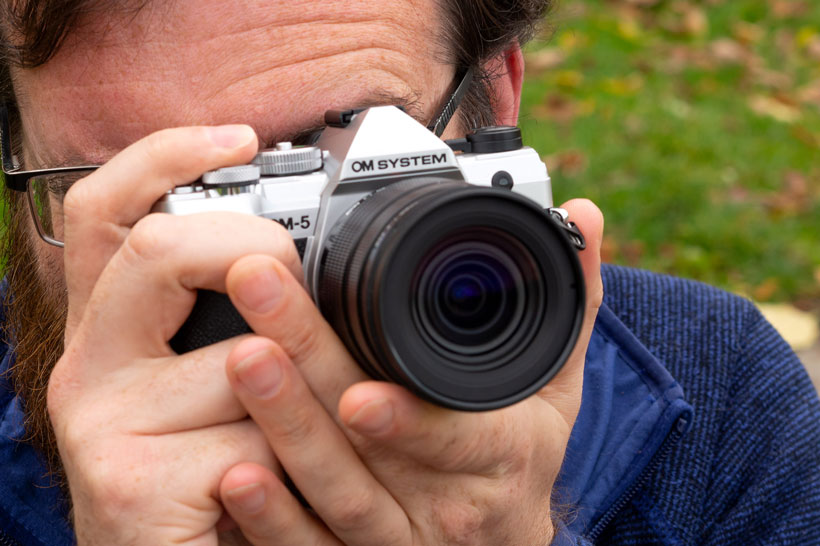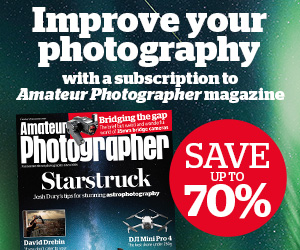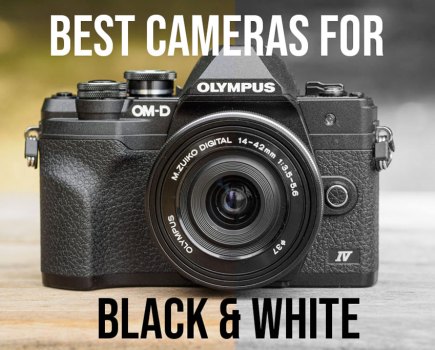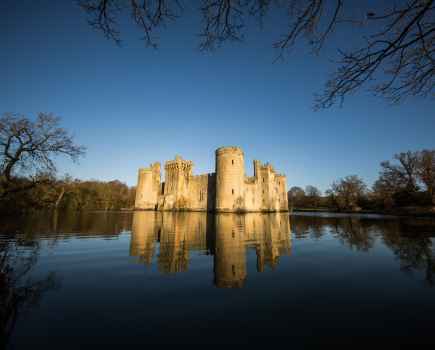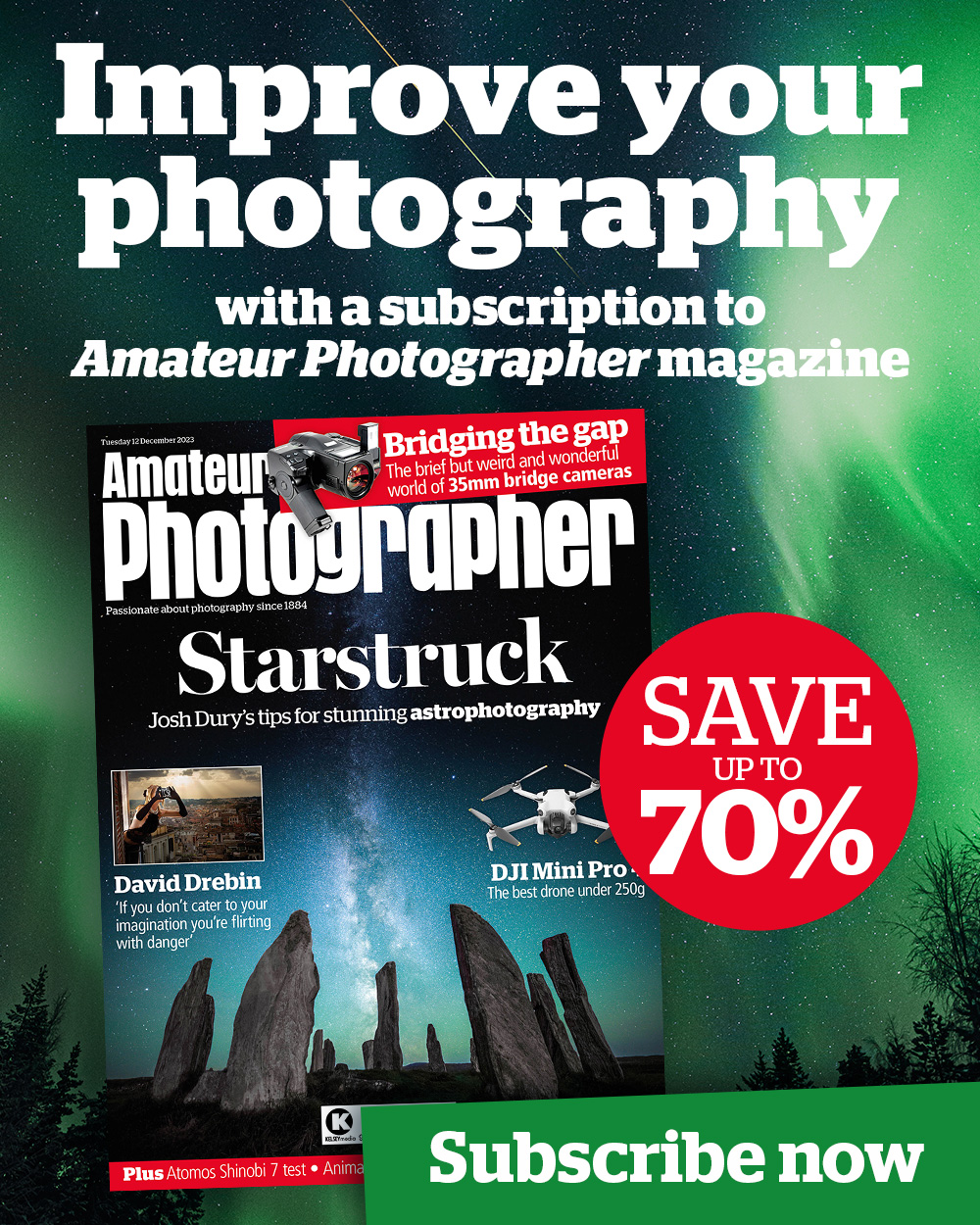Here to find the best Olympus camera, or the best OM-System camera? That might seem like an odd question, but the two are essentially one and the same, as ‘OM-System’ is the name given to the reborn line of Olympus cameras following the sale of the Olympus imaging division to OM Digital Solutions. While photographers may have been concerned initially, we’re a few years into the rebirth now and it’s clear there’s nothing to worry about – OM-System is respecting and updating the Olympus legacy with more fantastic mirrorless cameras and compacts.
The most recent mirrorless cameras we’ve seen are the OM-System OM-1 and OM-System OM-5. These are continuations of the Olympus EM-1 and E-M5 lines, for professionals and enthusiasts respectively. With class-leading weatherproofing, clever computational features and sublime image quality, both cameras left our reviewers greatly impressed. More recently, we’ve also seen the arrival of the OM-System Tough TG-7, an update to one of the most popular series of tough compacts.
Olympus and OM-System mirrorless cameras are all part of the Micro Four Thirds system. This means you’ll be shopping for the best best Micro Four Thirds lenses to go with them, as well as the best Micro Four Thirds zoom lenses. If you’re buying a new camera you’ll likely be able to get it bundled with a lens or two; if you’re buying used, you’ll need to also factor in the cost of the lens. We’ve included both new and second-hand cameras in this list to give you as much choice as possible. Read on to see which models we’ve picked – and if you need an explainer on all things Olympus / OM System, scroll to the bottom of the page for our FAQ section.
Want to cut to the chase? Here’s our quick list of the best OM-System and Olympus cameras today:
- Best Olympus camera overall: OM-System Olympus OM-1 – check best price
- Best compact Olympus/OM System camera: OM-System OM-5 – check best price
- Best Olympus camera for beginners: Olympus OM-D E-M10 Mark IV – check best price
- Best Olympus camera for Instagram: Olympus PEN E-P7 – check best price
- Best waterproof Olympus camera: OM-System Tough TG-7 – check best price
And the best used Olympus cameras to buy:
- Best used Olympus camera for influencers: Olympus PEN E-PL10 – check best price
- Best used Olympus camera for professionals: Olympus OM-D E-M1 Mark III – check best price
- Best used Olympus camera for sports and action: Olympus OM-D E-M1X – check best price
- Best used Olympus camera for travel: Olympus OM-D E-M5 Mark III – check best price
- Best budget used Olympus camera for enthusiasts: Olympus OM-D E-M1 Mark II – check best price
So now, let’s get started with the best Olympus and OM-System cameras you can buy, for all users and budgets…
Best OM-System and Olympus cameras in 2024
These are the OM System and Olympus cameras you can still buy new. There are plenty of older models still worth buying on the used market, and we have a section on the best used Olympus cameras below. Here, though, are the best OM System cameras to buy right now.
Best Olympus camera overall: OM SYSTEM Olympus OM-1
At a glance:
- 20MP Four Thirds Stacked BSI Live MOS sensor
- 50fps with C-AF, up to 120fps fixed AF
- ISO 80 – ISO 102,400 (extended)
- 5-axis in-body stabilisation (up to 8EV)
- IP53 rating with specific lenses
- Price $1,999 / £1,979 body only
How much do we love the OM-System OM-1? Well, first we gave it the full five stars in our review. We came away from our time with this camera seriously impressed, praising its super-fast shooting speeds and sophisticated AF enabled by its new BSI stacked live MOS sensor. Absolutely packed with features, this camera had a lot to live up to given that it was the first representative of the new OM-System range, following the sale of Olympus to OM Digital Solutions. It passed with flying colours.
We then wanted to see how the OM-1 would cope with high-speed bird photography and getting bird-in-flight images, so we took it out for a bird photography field test with wildlife photographer Tesni Ward. The camera performed extremely well, with the blackout-free burst shooting making it easy to get super-sharp images of fleeting moments. Then there’s the weatherproofing, the superb image quality, the high-resolution viewfinder… we could go on. Suffice to say, the OM-1 is not just the best ‘Olympus’ camera, but is possibly the best Micro Four Thirds camera ever made.
Pros:
- Incredible burst capabilities
- Streamlined handling
- IP53 weather-rating
Cons:
- Menus not touch sensitive
Best for: Professional photographers and high-speed shooting
We gave the OM System Olympus OM-1 5 Stars – read our review
Best compact Olympus/OM System camera: OM SYSTEM OM-5

The OM System OM-5 with 45mm f1.8 lens. Photo credit: Joshua Waller
At a glance:
- 20.4MP Four Thirds sensor
- ISO 200-6400 (extended: L64-25600)
- 30fps shooting
- 4K 30p video
- 2.36m-dot EVF, 3in, 1.04m-dot vari-angle LCD
- Price: $999 / £1,199 body only
After the success of the ‘Olympus’ OM-1, the OM SYSTEM OM-5 represented the difficult second album. The revitalised brand had shown promise under its new hands, but consistency would be the key to seeing if there was a long-term future. Fears proved unfounded – the OM System OM-5 has turned out to be a delight and triumph. As a replacement for the E-M5 series, it represents the middle of the range, and so delivers a lightweight build with high-speed shooting, and comes at a significantly lower price than the OM-1.
One key advantage the OM-5 brings compared to the previous E-M5 cameras is its significantly improved weather-sealing. The OM-5 is IP53 rated, and is the most affordable camera with that rating currently available. It means you can venture fearlessly into nature without worrying about a sudden downpour ruining your camera. Image quality is great too, with the OM-5 producing great-looking JPEGs that need minimal editing to look fantastic – perfect for those who’d rather be behind a camera than in front of a computer.
The OM-5’s relatively slim dimensions, robust weather-sealing and array of shooting options should on paper make it an excellent option for travel photography. Our editor Nigel Atherton put this theory into practice with an OM-System OM-5 field test on holiday in Cape Town, South Africa. His conclusion was that the O-M5 was pretty much the perfect travel camera, giving him all the features he needed and a few extras on top of that. It nailed the shots time and again, in pristine quality – can you ask much more of a camera than that?
Fine, if we have to gripe, we do wish OM System could have found room to include the newer style of menus brought in with the OM-1, rather than relying on the old Olympus menu system, in which features can often be maddeningly difficult to find. Softening the blow a little is the MyMenu section, which does make it easier to jump to your preferred functions.
Fast, high-quality and robust, the OM System OM-5 heralds great things for the future of the brand, and injects some real life into the Micro Four Thirds system. We’re huge fans, and gave it the full five stars in our review.
Pros:
- Robust, IP53 weather sealing
- Exceptionally good stabilisation
- Terrific JPEG output
Cons:
- Uses old-style Olympus menus
- Buffer fills up fast at 30fps
Best for: wildlife and outdoor photography
Read our full review of the OM SYSTEM OM-5
Best Olympus camera for beginners: Olympus OM-D E-M10 Mark IV
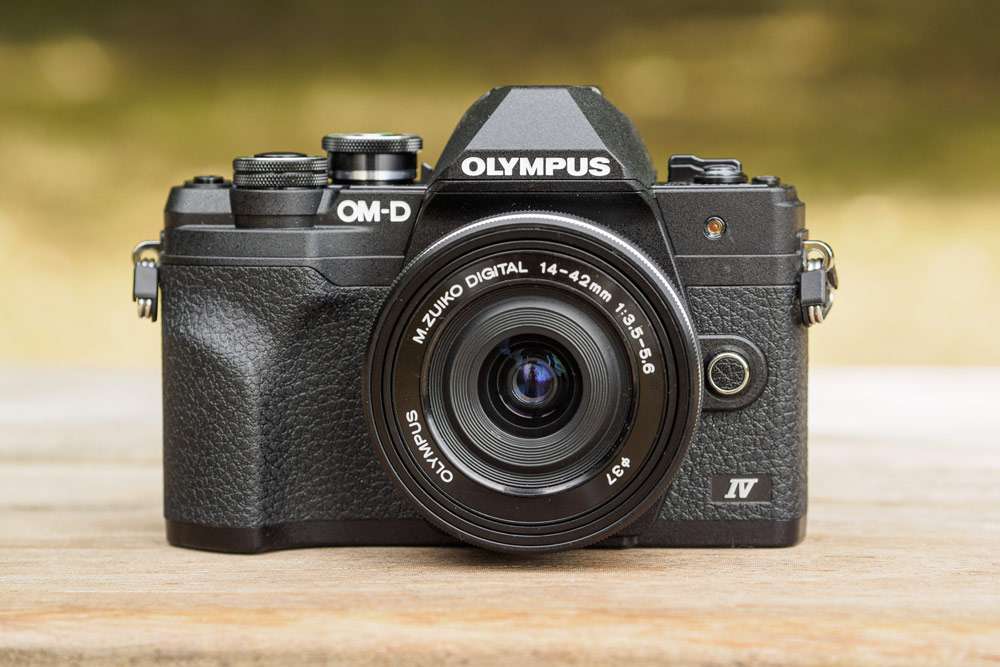
The Olympus OM-D E-M10 Mark IV, a great option for beginners. Photo credit: Andy Westlake
At a glance:
- 20MP Four Thirds sensor
- ISO 200-6400, ISO 80-25,600 (extended)
- Up to 15 frames per second shooting
- 5-axis in-body stabilisation
- 4K video
- Price $699 / £649 body only
The Olympus OM-D E-M10 Mark IV is an enduringly popular mirrorless camera, and if you’re looking for an entry-level model in the Olympus / OM-System range, it’s currently your best option. This will continue to be the case until OM-System brings out an OM-10, which we’re hoping they do soon. Still, the E-M10 is a cracking camera in its own right, achieving a near-perfect score in our review.
It’s immensely easy to just pick up and use, with superb JPEG output resulting in images that look very attractive straight out of camera. Though the body is small, the controls are sensibly laid out and the handling never feels cramped. The stabilisation is highly effective too – some of the best you can get on an entry-level mirrorless camera, in fact.
The E-M10 Mark IV is one of our favourite small mirrorless cameras, especially given that the MFT system is blessed with a terrific range of portable, high-quality lenses. If you’re looking for a travel-friendly mirrorless camera, it’s one of the best choices you can make.
Pros:
- Optimised for beginners
- Front-facing screen option
- Well-made handgrip
Cons:
- Flip-screen doesn’t work with tripod
- No mic socket
Best for: budding and emerging photographers
An almost perfect score – read our opinion on the Olympus OM-D E-M10 Mark IV
Best Olympus camera for Instagram: Olympus PEN E-P7
The Olympus PEN E-P7 is a great choice for selfie addicts, thanks to its 3-inch tilting touchscreen. Photo credit: Joshua Waller
At a glance:
- 20.3MP Four Thirds Live MOS Sensor
- ISO 100 – ISO 25600 (extended)
- Up to 15fps with electronic shutter
- 4K UHD 30, 25, 24fps video recording
- 5-axis in-body stabilisation
- Price £849 with 14-42mm lens
While the OM-1 was technically the first branded OM-System camera, the first model to be launched under the new management was actually this one – the capable little Olympus PEN E-P7. The PEN range is sometimes forgotten about in discussions of the various merits of Micro Four Thirds cameras, but the PEN E-P7 is well worth considering.
For a start, it’s very light, weighing in at just 337g body-only (and there are plenty of MFT lenses that won’t add a lot to that total). It’s a sprightly shooter, able to manage up to 8.7fps with its mechanical shutter or up to 15fps if you switch to the electronic. It’s an ideal choice for those who don’t want to spend too much time editing their images in post-processing – the JPEG output is first-rate, and it also includes a number of stylish monochrome and colour picture profiles for giving your images a specific look.
It is still on the pricey side arguably, especially when you consider that the cheaper E-M10 Mark IV gives you better build quality and an electronic viewfinder. Still, you may prefer the slim, stylish form factor of the PEN EP-7.
Pros:
- Incredibly lightweight
- Very good image quality
- Physical control dials
Cons:
- Body build a little flimsy
- Expensive asking price (try second-hand)
- Not available in the US
Best for: Social media
Olympus PEN E-P7 in-depth review
Best waterproof OM System camera: OM System Tough TG-7

The TG-7 is a capable tough compact. Image: OM Digital Solutions
At a glance:
- 12MP 1/2.33” CMOS image sensor
- 4x optical zoom. 25-100mm (35mm equivalent)
- Waterproof down to 15m
- Shock resistant – 2.1m (dropping from height), crushproof (100kg), freezeproof (-10°C)
- 4K video
- Price: $549 / £499
The Tough TG-7 is OM-System’s quick update to a much-loved series of tough cameras. It doesn’t change a great deal from the previous Olympus Tough TG-6 – it’s still based around the combination of a 12MP 1/2.3-inch sensor and a 25-100mm equivalent optical zoom lens. All this is encased in a super-tough body that’s waterproof, shockproof, freezeproof, etc. Again, much the same deal as the TG-6.
Lots of the key additions to the TG-7 are subtle, but welcome. The micro USB connection has been upgraded to the faster and more robust USB-C; you can now create time-lapse movies in-camera; the TG-7 supports vertical video recording (handy for TikTok / Instagram Reels); and the camera is now compatible with a separately sold remote.
There’s also a raft of accessories available to customise the TG-7, including a protective silicone jacket, some macro lights, underwater housing to extend the diving depth of the camera, fisheye/telephoto lens converters, and more. All this goes to assure the TG series’ continued dominance as the best tough compacts on the market.
Pros:
- Incredibly tough
- Optical zoom lens
- Huge number of accessories available
Cons:
- Small sensor impacts image quality
Best for: Amateurs and adventurous types
Learn more about the OM-System Tough TG-7
Best used Olympus cameras
The pace of development of Olympus cameras has been relatively slow compared to other brands, but this has an upside, as cameras several years old can offer much of the power and performance of the later models. Better still, Olympus cameras don’t have the same cult following as some recently discontinued models from Fujifilm, for example, so the prices are much more realistic – the only exception is the beautiful Olympus PEN-F.
So here are some used Olympus cameras that are still definitely worth buying today. You can pick up pristine examples for half of what they originally cost and still have a camera every bit as capable as modern rivals.
Best used Olympus camera for influencers: Olympus PEN E-PL10
The Olympus PEN E-PL10, a slim choice for travelling light.
At a glance:
- 20.1 MP Four Thirds Live MOS sensor
- ISO LOW – 25600 in 1/3 or 1 EV ISO steps
- Tiltable LCD Touch Panel
- Video: Up to 4K resolution
- Price: around $300 / £300 used, body only
The Olympus PEN E-PL10 has been designed very much with the amateur photographer in mind. It comes with lots of beginner friendly shooting modes as well as advanced helpful features like in-body image stabilisation and in-camera Raw editing. This camera also includes a silent shooting mode, tiltable LCD screen and 4K movie quality making it a desirable choice.
The Olympus E-PL10 is the upgrade to the E-PL9 and in all honesty there is little to distinguish the two although the image processor has been swapped to the faster TruePic VIII, which is found in many of Olympus higher end models. These days, new models seem to have vanished from the shelves, but you can generally find it for a decent price online. Look out for the E-PL9 too – it may be available even cheaper.
Pros:
- Silent shooting mode
- In-camera Raw processing
- Handy for beginners
Cons:
- Not much improvement on E-PL9
- No viewfinder
Best for: Beginners on a budget
Best used Olympus camera for professionals: Olympus OM-D E-M1 Mark III
The Olympus OM-D E-M1 Mark III has a rugged, weather-sealed body. Credit: Andy Westlake
At a glance:
- 20.4MP Four Thirds Live MOS sensor
- 2.36M-dot EVF
- 121-point phase detection AF
- 5-axis in-body stabilisation
- Movie 4K
- 18fps shooting with C-AF
- ISO 64-25,600 (extended)
- Weight: 504g
- Price around $900 / £900 used, body only
Released in February 2020, the Olympus OM-D E-M1 Mark III upgraded the Olympus OM-D E-M1 Mark II that was released three years prior. At first glance we found the Mark III to look very similar to its predecessor but with the welcome addition of a joystick for selecting the AF area.
The biggest upgrade though was inside because the E-M1 Mark III debuted a new processor, the TruePic IX. This new processor allowed features from the E-M1X, including LiveND that mimics the effect of neutral density filters up to 5 stops, and a hand-held high-resolution multi-shot mode that outputs 50MP images. Essentially the E-M1 Mark III was the camera the E-M1X should have been all along!
Other impressive features the E-M1 Mark III includes are a 4K movie shooting mode, 121-point superfast phase detection AF and an incredibly effective 5-axis in-body stabilisation. For those photographers whose profession takes them out and about such as wildlife and sport we also found the sturdy extensive weather sealed body to live up to its promise.
The arrival of the OM-1 from OM SYSTEM has all but eclipsed the OM-D E-M1 Mark III, and it seems to have been effectively discontinued. You’ll probably have the best luck finding it on the used market, where you’ll get a fantastic discount on this all-around excellent camera.
Pros:
- Good control layout with AF joystick
- Effective in-body stabilisation
- Loads of shooting options
Cons:
- Menus can be hard to navigate
- Relatively low resolution viewfinder
Best for: Sports photographers on a budget
Read our review of the Olympus OM-D E-M1 Mark III
Best used Olympus camera for sports and action: Olympus OM-D E-M1X
With the Olympus OM-D E-M1X, you’ll need to hunt around on the second-hand market. Credit: Andy Westlake
At a glance:
- 20.4MP Four Thirds MOS sensor
- 121-point phase-detection AF
- 15fps shooting (10fps with C-AF)
- 36m-dot EVF, 0.83x magnification
- 3-in fully-articulated touchscreen
- 5-axis in-body stabilisation
- Weight: 997g (with batteries and cards)
- Price around $700 / £700 used, body only
Announced back in January 2019 the Olympus OM-D E-M1X was well received and included some great specs and influential technology, however since its launch other Olympus cameras (such as the E-M1 Mark III and the subsequent OM-1) have outperformed the E-M1X, pushing it down the pecking order.
On the plus side we found this camera to support a huge range of useful additional photographic features like its in-body stabilisation (up to 7.5 stops), support an efficient continuous autofocus and subject detection mode, and put out excellent JPEGs that are accurate in colour exposure. However on the down side the lower ISO range compared to its peers was disappointing as well as its bulky and heavier body build compared with other Micro Four Thirds cameras in the Olympus range.
If you have a shop around on the second hand market you can pick up a model in good condition for around £700.
Pros:
- Very effective stabilisation
- Attractive, colour-accurate JPEGs
- Available at a good price second-hand
Cons:
- Big for MFT
- Expensive when new
Best for: Second hand buyers
Our review of the Olympus OM-D E-M1X.
Best used Olympus camera for travel: Olympus OM-D E-M5 Mark III
The Olympus OM-D E-M5 Mark III is a perfect option for those after lightweight camera. Credit: Andy Westlake
At a glance:
- 20.4MP Four Thirds sensor
- 121-point phase detection autofocus
- 10fps shooting with continuous AF
- 5-axis in-body stabilisation
- ISO sensitivity (extended): 64-25,600
- Cinema 4K video recording
- Weight: 414g
- Price around $700 / £700 used, body-only
The Olympus OM-D E-M5 Mark III is another 5 star AP awarded camera that houses some impressive features. These include its small and lightweight body build that is also weather sealed, 121 AF point phase detection that we found to perform quickly and accurately, and its effective 5 -axis in-body stabilisation that delivers sharper images when hand-held. This means you can reduce the shutter speed to a lower setting compared with previous models rather than pushing up the ISO and risking more noise.
If you like the sound of a camera that’s small, handles well and gives attractive images, and works out as excellent value for money, then the E-M5 Mark III should certainly be high on your shortlist. Paired with a compact Micro Four Thirds lens, you have a great travel system.
The OM-System OM-5 arrived as a continuation of the E-M5 line – as such, the OM-D E-M5 appears to have been discontinued, and you probably won’t have much luck buying it new. On the second-hand market, it currently goes for around £630-660, which is excellent value for a camera this sophisticated.
Pros:
- Lightweight build
- Good weather-sealing
- Very effective stabilisation
Cons:
- No AF-point joystick
- Small grip won’t suit everyone
Best for: Travel, enthusiasts and hobbyists photographers
Read our review of the Olympus OM-D E-M5 Mark III
Best budget used Olympus camera for enthusiasts: Olympus OM-D E-M1 Mark II
Olympus OM-D E-M1 Mark II – our Olympus choice for action photographers on a budget
At a glance:
- 20MP Four Thirds sensor
- Up to 60fps continuous shooting
- 5-axis in-body stabilisation
- 121 AF points
- 4K video recording
- 36-million-dot EVF
- Battery life: 440 shots
- Price: varies widely, $400 / £400 would be good
When the Olympus OM-D E-M1 Mark II was announced back in 2016 the full retail price was a steep £1,850. Fast forward 8 years and look at the second hand market or buy a reconditioned one directly from Olympus and you’ll save yourself well over £1,000!
Although this camera is not the most recent, the features and technology included are still very much impressive. This includes its 5-axis in-body stabilisation, 4K video, fully articulated touchscreen and 121 AF point feature.
One of its major selling points however was its 60fps burst mode feature at full resolution which even by today’s standards is pretty impressive! At full speed the focus is fixed, but if you want the 121-point AF system to continue tracking the subject between frames, the E-M1 II is still capable of shooting at up to 18 frames per second. This on top of twin SD card slots, and a weather sealed body makes it a great choice for any action photographer.
Pros:
- Twin card slots
- Capable burst shooting
- Good second-hand price
Cons:
- Complicated, confusing menus
Best for: Wildlife and sports photographers on a budget
Our review of the Olympus OM-D E-M1 Mark II
How to choose the best Olympus camera / best OM-System camera
The current slate of Olympus and OM-System cameras consists almost entirely of Micro Four Thirds mirrorless models – with one exception, as mentioned. There’s a lot of consistency between the models – all the interchangeable-lens cameras use MFT sensors, almost all now with 20MP resolution. Many also offer advanced computational features like Pixel-Shift High Resolution modes, which use the in-body stabilisation to composite several images together.
The naming conventions can be confusing, but there is something of a logic to it, so let’s quickly run through the basics. The interchangeable-lens cameras can be split into two categories – the OM-D cameras and the PEN cameras, though the PEN range seems to be dwindling. So let’s take a look at the models on offer.
Olympus OM-D E-M1 series / OM-System OM-1: Sitting at the top of the pile are the ‘1’ designated cameras, which includes the Olympus OM-D E-M1 Mark III (and predecessors), the Olympus OM-D E-M1X and the newer OM-System OM-1. These are designed for professionals and advanced enthusiasts. With thoroughly weatherproof bodies, sophisticated stabilisation and advanced computational features like Starry Sky AF, they’re some of the best Micro Four Thirds cameras you can buy.
Olympus OM-D E-M5 series / OM-System OM-5: The E-M5 cameras have long been Olympus’ lightweight, mid-range mirrorless cameras, offering a lot of the features of the E-M1 cameras such as high-speed shooting and weather-sealing, but with a few cutbacks to reduce the body size and the price. OM-System has released its own version in the form of the O-M5, which lacks the OM-1’s subject-detection autofocus, but still has IP53 weather-sealing and Starry Sky AF.
Olympus OM-D E-M10 series: The E-M10 cameras are Olympus’ entry-level option, cheaper and smaller than either the E-M5 or E-M1 models. While they aren’t weather sealed, they offer a lot of functionality for the price, and still produce great images. The latest in the series is the Olympus OM-D E-M10 Mark IV; we haven’t seen an OM-System successor yet, but when this arrives, we expect the OM-10 will be a familiar name to many.
Olympus PEN series: Smaller and more streamlined than the OM-D cameras, the PEN mirrorless models are stylish mirrorless cameras for those who still want to take great photos, but want a more stylish camera. The E-PLx range are more beginner friendly, whereas the E-Px range is a more premium option. PEN cameras also don’t have viewfinders, so you’ll need to be comfortable using the LCD screen.
Olympus ‘Tough’ series: The odd one out in the family, Olympus’ Tough TG cameras are waterproof compacts with fixed zoom lenses and 1/2.3-inch sensors. They’re some of the most popular tough cameras out there, and the most recent OM System TG-7, and Olympus Tough TG-6 have a reputation for being one of the best you can buy.
If you want some larger-sensor options, don’t forget to check out our guide to the best full-frame mirrorless cameras.
Best Olympus / OM-System cameras – frequently asked questions
Does Olympus still make cameras?
Yes, but that’s not what they’re called. The Olympus camera division was purchased by OM Digital Solutions, which has since given it a new life under the ‘OM-System’ moniker. We’ve seen the arrival of three cameras since then – first the OM-System ‘Olympus’ OM-1, so named to bridge the gap between the two brands, the subsequent OM-5, and TG-7. The first two are effective continuations of the E-M1 and E-M5 digital lines, and share many features with their predecessors. They’re great cameras in their own right, and they also feel like Olympus cameras in use.
There are also plenty of Olympus-branded cameras that are still available and can be bought new, such as the Olympus OM-D EM10 Mark IV, the Olympus Tough TG-6 and the Olympus PEN EP-7.
Which Olympus cameras have Starry Sky AF?
The Olympus E-M1 Mark III and OM-System ‘Olympus’ OM-1 have Starry Sky AF; it has also been ported on to the newer OM-System OM-5.
Starry Sky AF is a popular feature in Olympus and OM-System cameras, a newly developed focusing algorithm that allows the camera to lock onto even the tiniest points of light in the night sky. Accurate focusing can be a real pain for astrophotographers, and as such, this feature is highly coveted among star-shooters.
What sensor is in Olympus cameras?
Olympus and OM-SYSTEM cameras are almost all Micro Four Thirds mirrorless cameras (there’s one exception – thee waterproof Tough TG-6 uses a smaller 1/2.3-inch sensor and has a fixed zoom lens). Micro Four Thirds is a sensor standard and lens mount; the sensor itself measures 17.3mm x 13mm and produces images with a 4:3 aspect ratio. This is a smaller sensor size than full-frame (36mm x 24mm) or APS-C (23.6mm x 15.7mm). This means a compromise in terms of raw image quality and dynamic range, however it offers up a number of advantages in other areas.
Micro Four Thirds cameras are able to offer a physically smaller camera body, as well as smaller lenses to match. This can make the system much more portable and well-suited to travel and street photography. Furthermore, the smaller sensor size of Micro Four Thirds incurs a 2x crop factor, effectively doubling the focal length of a lens. Mounted on an Olympus camera, a 50mm lens behaves like a 100mm lens, giving you telephoto reach from a smaller and cheaper lens compared to full-frame.
We think Micro Four Thirds has a lot to offer photographers and videographers alike – you can read more on why we love the system in our piece on why Micro Four Thirds offers something no-one else can.
Can Olympus cameras use Panasonic lenses?
Yes. Panasonic Lumix G cameras are also part of the Micro Four Thirds standard, meaning that Panasonic Lumix G, Olympus and OM-SYSTEM cameras and lenses can all be used interchangeably. However, there’s a reason we’re specifying ‘Lumix G’ there – Panasonic also offers its full-frame line of Lumix S cameras, with Lumix S lenses to match. This system uses the ‘L’ lens mount, which was born part of an alliance between Panasonic, Leica and Sigma. Bear in mind that features like stabilisation are sometimes less effective when you’re mixing and matching brands – if you’re using a stabilised camera and lens from the same maker, they can often work in tandem to deliver a more powerful effect.
Micro Four Thirds cameras and lenses are not compatible with L-mount – so double-check the branding of any Panasonic lens before you buy it for an Olympus or OM-System camera. If it’s Lumix S, it won’t fit! You’ll also find a massive range of Micro Four Thirds lenses from other brands including Sigma, Samyang/Rokinon, Meike, Lensbaby, Voigtlander, Venus/Laowa, and others.
Further Reading
- APS-C Vs Full Frame (inc MFT) – which sensor size is best?
- Why Micro Four Thirds offers something no-one else can
- Best Micro Four Thirds lenses to buy

